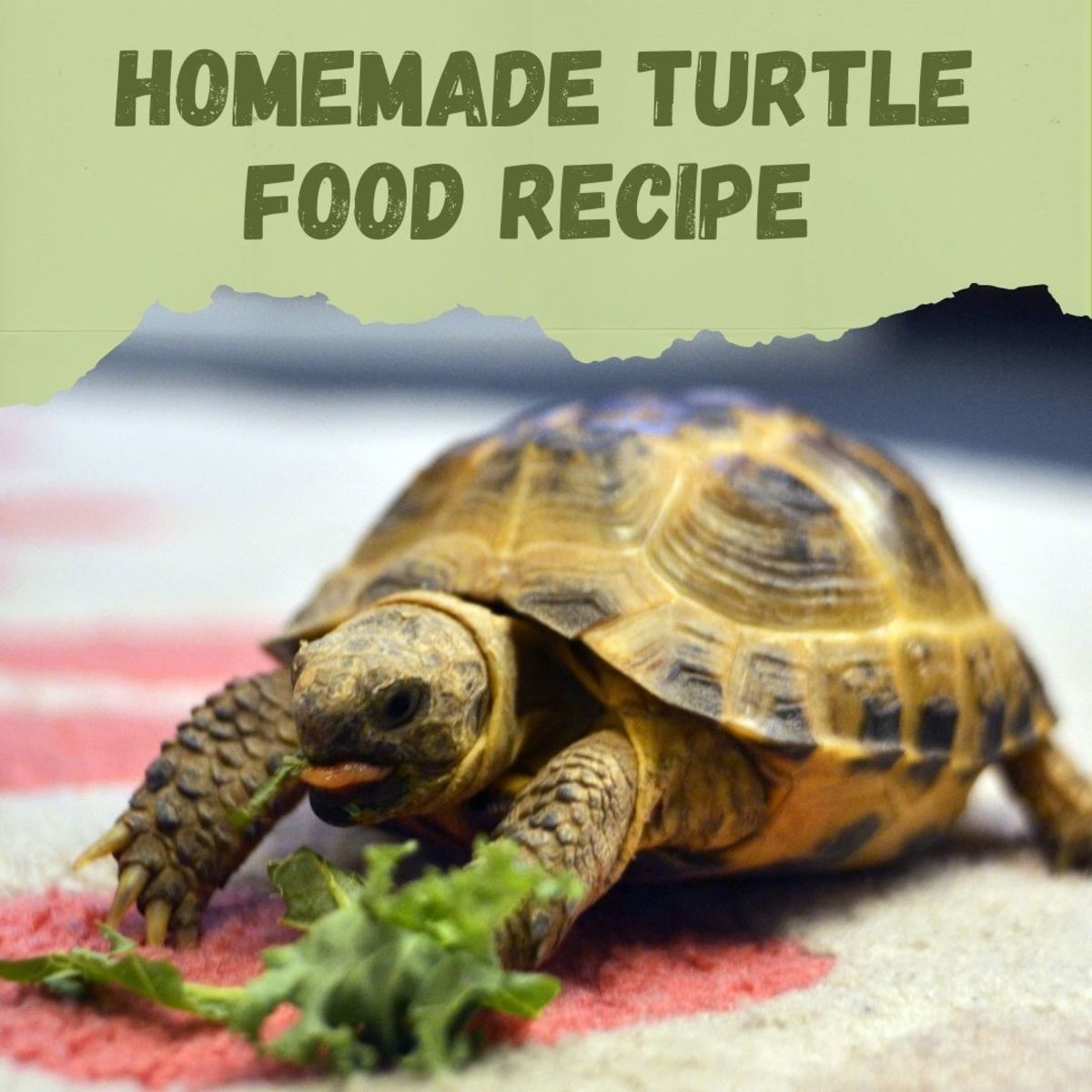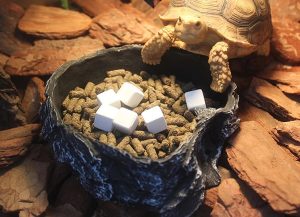
Homemade Turtle Food with Calcium: A Comprehensive Guide
Introduction
Providing a balanced and nutritious diet is crucial for the health and longevity of your pet turtle. While commercial turtle food offers convenience, creating your own homemade turtle food allows you to customize the ingredients, ensure optimal nutrition, and address specific dietary needs, particularly calcium supplementation. This guide will walk you through the benefits of homemade turtle food, the importance of calcium, suitable ingredients, recipe ideas, and essential considerations for feeding your shelled companion.
Why Consider Homemade Turtle Food?
While commercial turtle food is a convenient option, opting for homemade food offers several advantages:
- Control over Ingredients: You have complete control over what goes into your turtle’s food, ensuring fresh, high-quality ingredients and avoiding artificial additives, preservatives, and fillers commonly found in commercial products.
- Customization: You can tailor the food to your turtle’s specific species, age, and health conditions. For instance, young, growing turtles require more protein and calcium than older adults. Turtles with specific health issues can benefit from diets tailored to address those needs.
- Variety and Enrichment: A homemade diet allows for a wider variety of foods, stimulating your turtle’s appetite and providing mental enrichment. This can help prevent boredom and promote overall well-being.
- Cost-Effectiveness: Depending on the ingredients you choose, homemade turtle food can be more cost-effective than consistently buying high-quality commercial options.
- Addressing Calcium Deficiency: Homemade food allows you to effectively increase calcium intake, which is essential for shell development and bone health.
The Importance of Calcium for Turtles
Calcium is a vital mineral for turtles, playing a critical role in:
- Shell Development: A turtle’s shell is primarily composed of calcium. Adequate calcium intake is essential for proper shell growth, strength, and density. Deficiency can lead to soft shells, pyramiding (abnormal shell growth), and other shell deformities.
- Bone Health: Like all vertebrates, turtles need calcium for strong bones and skeletal structure.
- Muscle Function: Calcium is involved in muscle contraction, including the muscles responsible for breathing and movement.
- Nerve Function: Calcium is essential for proper nerve function and transmission of nerve impulses.
- Egg Production (for females): Female turtles require significant amounts of calcium to produce healthy eggs with strong shells.
Symptoms of Calcium Deficiency in Turtles
Recognizing the signs of calcium deficiency is crucial for timely intervention:
- Soft Shell: The most obvious sign is a shell that feels soft or pliable to the touch, rather than hard and rigid.
- Pyramiding: Abnormal, bumpy growth on the shell, where the scutes (shell segments) develop unevenly.
- Lethargy: A decrease in activity level and overall energy.
- Muscle Tremors: Involuntary muscle twitching or shaking.
- Anorexia: Loss of appetite and refusal to eat.
- Swollen Limbs: In severe cases, calcium deficiency can lead to bone deformities and swollen limbs.
Ingredients for Homemade Turtle Food with Calcium
When creating homemade turtle food, it’s essential to include a variety of ingredients that provide a balanced diet and adequate calcium:
- Leafy Greens (Calcium-Rich):
- Dark Leafy Greens: Collard greens, mustard greens, turnip greens, dandelion greens, kale (in moderation due to oxalates), and romaine lettuce are excellent sources of calcium and other essential nutrients.
- Avoid: Spinach (high in oxalates, which can inhibit calcium absorption), iceberg lettuce (low nutritional value).
- Vegetables:
- Carrots (shredded or cooked), sweet potatoes (cooked), squash (cooked), green beans, peas, and bell peppers provide vitamins, minerals, and fiber.
- Fruits (in Moderation):
- Berries (strawberries, blueberries, raspberries), melon, and apples are good sources of vitamins and antioxidants. Offer fruits sparingly, as they are high in sugar.
- Protein Sources:
- Aquatic Turtles: Commercial turtle pellets (as a base), feeder fish (goldfish should be avoided due to thiaminase), earthworms, crickets, mealworms (in moderation), and cooked lean meats (chicken, turkey) in small amounts.
- Terrestrial Turtles (Tortoises): Small amounts of cooked lean meats, boiled eggs (occasionally), and high-quality tortoise pellets can supplement their diet.
- Calcium Supplements:
- Calcium Carbonate Powder: A readily available and easily digestible form of calcium. Sprinkle a small amount (as directed by your veterinarian or reptile expert) on the food.
- Cuttlebone: Provides a natural source of calcium and helps keep the turtle’s beak trimmed. Offer a cuttlebone for your turtle to nibble on.
- Calcium Blocks: Another option for providing a supplemental calcium source.
Homemade Turtle Food Recipes
Here are a couple of example recipes you can adapt based on your turtle’s species and preferences:
Recipe 1: Aquatic Turtle Calcium Boost
- Ingredients:
- 1 cup commercial turtle pellets (high-quality)
- 1/2 cup chopped collard greens
- 1/4 cup shredded carrots
- 1/4 cup cooked sweet potato (mashed)
- 1/4 cup chopped earthworms or feeder fish (gut-loaded)
- 1 teaspoon calcium carbonate powder
- A small amount of ReptiSafe or similar water conditioner to make a slurry
- Instructions:
- Combine the commercial turtle pellets, chopped collard greens, shredded carrots, and cooked sweet potato in a bowl.
- Add the chopped earthworms or feeder fish.
- Sprinkle the calcium carbonate powder evenly over the mixture.
- Mix everything thoroughly.
- Add a small amount of Reptisafe (or dechlorinated water) to bind the ingredients and make a soft slurry.
- Offer the food to your turtle in small portions, removing any uneaten food after a few hours.
Recipe 2: Tortoise Calcium Delight
- Ingredients:
- 1 cup chopped mixed greens (collard greens, mustard greens, dandelion greens)
- 1/4 cup shredded carrots
- 1/4 cup chopped bell pepper
- 1/4 cup cooked squash (diced)
- 1 tablespoon high-quality tortoise pellets (soaked in water)
- 1/2 teaspoon calcium carbonate powder
- Instructions:
- Combine the chopped mixed greens, shredded carrots, chopped bell pepper, and cooked squash in a bowl.
- Add the soaked tortoise pellets.
- Sprinkle the calcium carbonate powder evenly over the mixture.
- Mix everything thoroughly.
- Offer the food to your tortoise, ensuring fresh water is always available.
Important Considerations
- Consult Your Veterinarian: Before making significant changes to your turtle’s diet, consult with a reptile veterinarian. They can provide species-specific recommendations and address any underlying health concerns.
- Variety is Key: Don’t rely on just one recipe. Rotate ingredients to provide a wide range of nutrients.
- Proper Hygiene: Wash all fruits and vegetables thoroughly before preparing the food.
- Storage: Store homemade turtle food in the refrigerator for up to 2-3 days.
- Observation: Monitor your turtle’s appetite, activity level, and shell condition. Adjust the diet as needed.
- Avoid Toxic Foods: Never feed your turtle foods that are known to be toxic, such as chocolate, avocado, rhubarb leaves, and onions.
- Supplementation: While homemade food can be highly nutritious, calcium supplementation is often necessary to ensure adequate intake, especially for young, growing turtles or breeding females.
- Water Quality: Clean water is essential for turtles. Make sure your turtle has access to fresh, clean water at all times, as this aids in digestion and nutrient absorption.
- UVB Lighting: Providing proper UVB lighting is crucial for calcium absorption. UVB light allows turtles to synthesize vitamin D3, which is essential for the absorption of calcium from their diet.
Conclusion
Making homemade turtle food with calcium is a rewarding way to ensure your pet receives optimal nutrition and stays healthy. By carefully selecting ingredients, providing a balanced diet, and supplementing with calcium as needed, you can help your turtle thrive for years to come. Remember to consult with a veterinarian or reptile expert for personalized advice and to monitor your turtle’s health closely.

